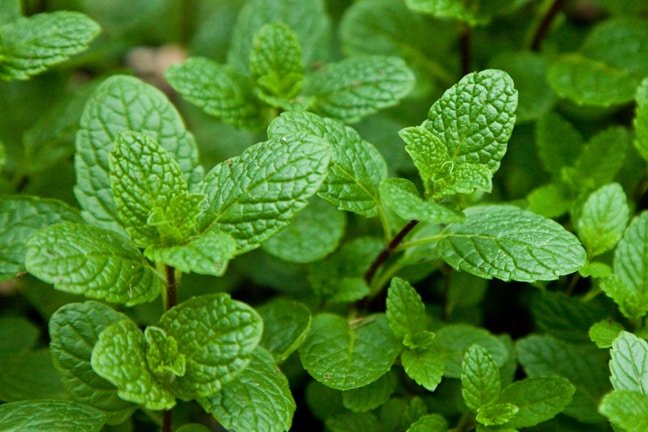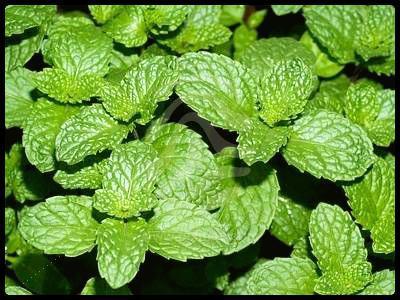Mentha/Pudina/Mint Farming Guide:

Introduction of Mint: – Mint is an aromatic perennial herb, popularly known as “Pudina” in India and scientifically known as “Mentha”. Mint is an energizing herb that can add flavor to many dishes. Mint is used in cooking as a flavouring agent and mint oil used for flavouring mouth washes, tooth pastes. Mint belongs to “Labiates” family.
Health Benefits of Mint (or) Mentha (or) Pudina: – Some of the health benefits of Mint are given below.
- Mint helps in digestion/stomach disorders.
- Mint helps in controlling nausea & headache.
- Mint helps in respiratory disorders and coughs.
- Mint helps in asthma patients.
- Mint helps in depression and fatigue.
- Mint also contributes in weight loss.

Local Names for Mint in India:- Pudina Patta (Hindi), Puthina/Pudhinaa(Tamil), Pudina (Telugu),Pudina (Kannada), Pudina (Marathi),Hara Pudina (Punjabi), Fudino / Phodina (Gujarati),Putiyina/Pudhinaa (Malayalam),Pudyanu (Kashmiri).
Major Types of Mint:- There are 4 most commonly grown mint types.
- Japanese Mint/Menthol Mint.
- Spearmint.
- Peppermint.
- Bergamot mint.
Japanese Mint/Menthol Mint is most widely grown commercial crop in India.
The mint we find in the shop is “spearmint”.
Commercial or Hybrid Varieties of Japanese Mint:- MAS-1,Hybrid-77,Shivalik,EC-41911,Gomti,Himalaya,Kosi,Saksham and Kushal.
Agro-Climatic Condition required for Mint Farming:- Normally, tropical climate is not suitable for mint cultivation. However, Japanese mint can be cultivated in both tropical and sub-tropical regions. The suitable temperature for mint cultivation is between 20°C to 40°C and rainfall should be between 100 cm to 110 cm. Light showers at planting time and good sunny days at harvesting stage is best for its high yield and good quality of leaves.
Soil Requirement for Mint Farming:- Mint can be cultivated in wide range of soils. However loam or sandy loam or deep soils rich in organic matter are best for its cultivation. Make sure the soil is well drained and loose textured for better growth of mint leaves. Mint leaves thrive well in fertile soil with pH range of 6.5 – 8.0 and as it does not grown in clay soils, avoid these soils for mint farming. Water stagnation should be avoided in the field. Mint can also be cultivated on both black and red soils. Liming is recommended, In case of acidic soil having pH value less than 5.5.
Land Preparation in Mint Farming:- Should plough and give two cross harrowing to bring the soil to fine tilth. As part of land preparation, add Farm Yard Manure (compost) about 50 to 60 cart loads per hectare.
Propagation in Mint Farming:- Mint can be propagated by vegetative method through stolons and runners.
Planting Season in Mint Farming:- Before starting monsoon season (or) In northern India, planting of Japanese mint is suitable from 1st week of Feb to 2nd week of March.
Planting Method in Mint Farming:- Cut the suckers into 10 to 14 cm length before sowing in the soil. An about 450 to 500 kg of suckers are required per hectare land. Suckers should be set in furrows. Plant the suckers end to end with spacing of 40 cm apart in rows 60 cm apart.
Weed control/Intercultural operations in Mint Farming:- In mint plantation, 4 weeks to 14 weeks period after planting is crucial phase for controlling the weeds. Intensive weeding should be carried in mint crop by mechanical hoes (or) hand. Since controlling the weeds in mint crop is very expensive process, use of wheel hoes either driven by hand or bullock drawn would reduce the cost. There are many weedicides are recommended but these cannot control monocot weeds after monsoon (rainy) season. To effectively control weeds, combine mechanical, manual & chemical methods. Apply the weedicides first followed by mechanical or manual methods @ 8 to 10 weeks when mulching should also be applied. Here are some of the herbicides:Atrazine & Simazine (1 kg a.i. per hectare),Pendimethalin (0.75 a.i. per hectare), Oxyflurofen (0.5 kg a.i.per hectare).
Manures and Fertilizers in Mint Farming: – About 25 tonnes of well-rotten Farm Yard Manure (F.M.Y.) should be applied per hectare @ the time of planting.125 kg of Nitrogen,45 kg of Potassium ,65 kg of Phosphorus per hectare are recommended. At the time of planting, mix the soil with entire quantity of P and K along with 1/5th of N. the remaining 4/5th of N is given as top-dressing twice for each harvest in available split doses.
Crop rotation in Mint Farming:- Best way of controlling weeds is to follow the crop rotation with other food crops. Continuous mint cropping is not advisable in the same field. The best rotation is Mint : Potatoes, Mint : Rice and Mint : Vegetables : Peas, based on the cropping system followed in the area.
Irrigation in Mint Farming:- Mentha crop demands good moisture content well distributed throughout the growing period. 10 -12 irrigations should be given in summer season @ 10 -12 days interval and another 5 – 6 irrigations should be given for autumn crop. Avoid water stagnation in rainy season by providing good soil drainage.
Pests and Diseases in Mint Farming:-
Insect Pests:
Hairy Caterpillar —> To control this, apply Malathion (or) Thiodan @ 1.7ml / lit of water.
Cutworms—> To control this , treat the soil with Phorate 10grams before planting.
Red Pumpkin Beetle—> To control this, spray Malathion @1ml/lit of water.
Mint Leaf Roller—> To control this, 2 to 3 sprays of Thiodan @1.5ml/lit of water @ weekly intervals.
Diseases:
Stolon Rot—> To control this,a) 3-year-crop rotation with rice, wheat and mint should be followed.b) Treat the stolons with 0.25% solution of Captan or 0.3 % Agallol solution, or 0.1% Benlate, for 2 to 3 minutes before planting.
Fusarium Wilt—> To control this, apply Bavistin,Benlate, and Topsin.
Leaf blight—> To control this, apply copper fungicide.
Harvesting of Mint:- Usually Harvesting in Mint cultivation is done 2-3 times in a year .
- 1st crop harvesting should be done in May – June (Before rainy season starts).
- 2nd crop harvesting should be done in September – October (after monsoon).
- 3rd crop harvesting should be done in November – December.
Yield of Mint:- Yield depends on farm management practices and variety, During 1st year , an about of 150 to 160 kg of Oil per hectare can be expected. Subsequent years, 2250 kg – 250 kg per hectare can be obtained.
Spent Grass:- Spent grass is the material left after distillation of oil. This grass can be used for mulching or manure in fields. paper and paper boards also made out of this.
If you want to know about sheep and goat farming in India: Read Here.
DEAR SIR’ PLS SEND ME DETAIL ABOUT MINT FARMING THAT FROM WHERE WE BUY SAPLINGS AND WHERE WE SELL THE CROP OR HOW TO AND WHOM TO EXPORT AND WHATS THE PROCEDURE.
THANKING YOU
RAJEEV WSHARMA
For Mint growing, you can get sapplings/seedlings from vegetable nurseries. Usually, mint growers send their produce to local vegetable markets. If you grow quality mint, you may have some buyback contract with medicinal or herbal companies.
Dear Sir
I am planning to grow mint in 2 bigha area of land or 0.2529 hectare land , can you pls advice how to calculate the cost of cultivation and give me some leads for buy back contract
We will update the mint cultivation project report in upcoming months. You need talk to vegetable vendors or big supermarkets for buy back contract.
Dear sir,
I’m having farm of 5 acres 25 km away from Hosur. The temperature and humidity is so idle for mint cultivation.
Farmers in shoolgiri near Hosur are cultivating mint in large area. There is a market in shoolgiri and local buyers purchase mint leaves from farmers field itself and transport them to various places of the country.
If you recommend New mint varieties on buyback system myself and farmers near the village focus on this crop.
Please send me a quick reply about the same. Thank you.
Apart from what you said (selling Mint to local buyers), you can contact any herbal companies like Himalaya, Patanjali etc.. for large quantities of mint buyback.
What is present market rate of mint in india
With which crops can peppermint be sown along with it in rabi?
What is the expected /approx yield per plant of mint ?
I appreciate this information more on how to control mints in long rains.